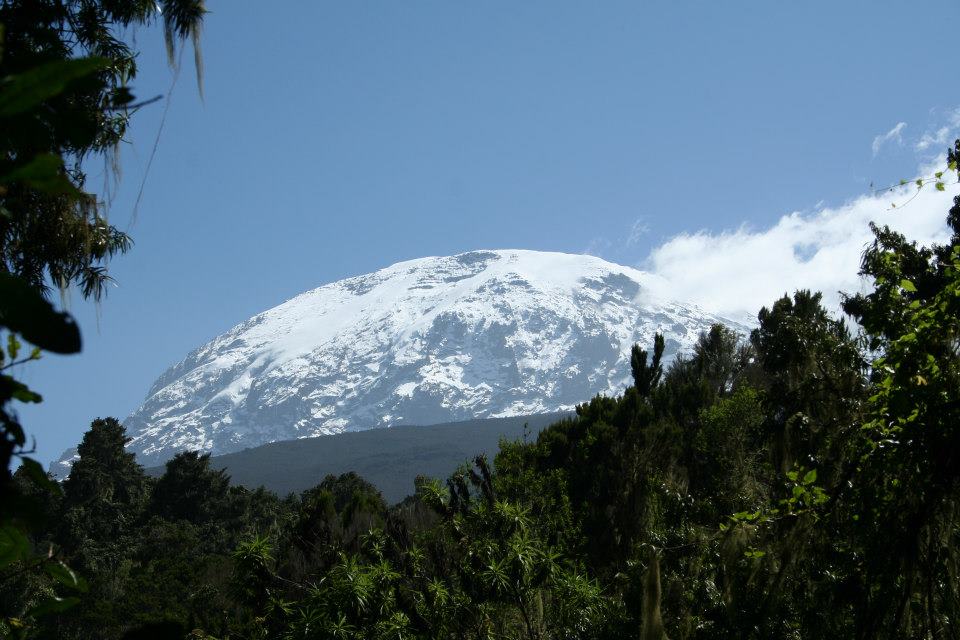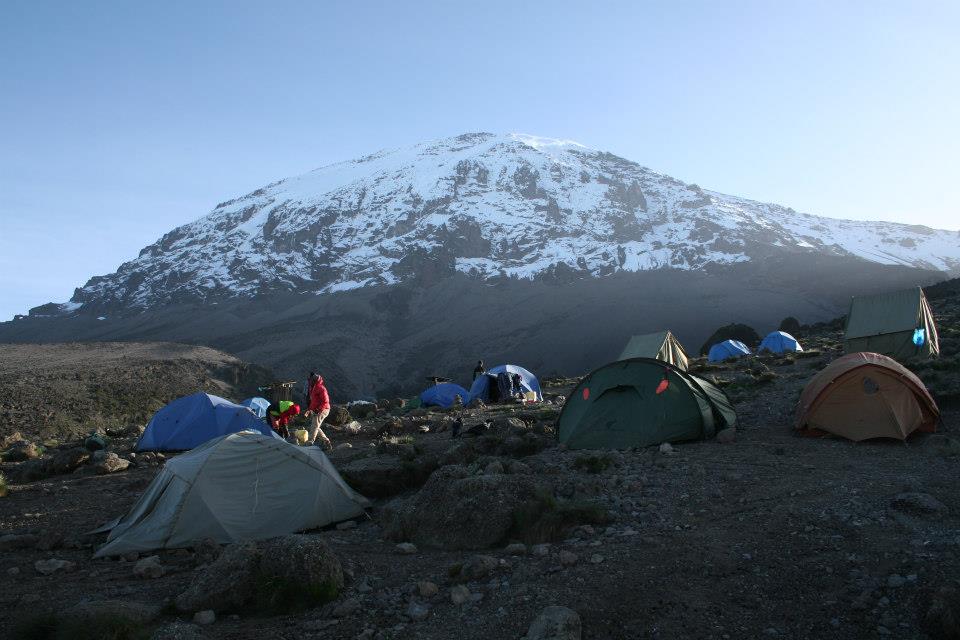Kilimanjaro, Africa’s highest mountain and the tallest free standing mountain on Earth, is located on the Kenya-Tanzania border, about 370 km south of the equator and approximately the same distance from the Indian ocean (3 04’S, 37 21’ E). This massive stratovolcano consists of 3 main peaks, of which Kibo (5893 m) is the highest and the only one still retaining glaciers. In recent years Kilimanjaro and its dramatic ice loss have become an “icon” of climate change, attracting broad interest in its fate. The three remaining ice fields on the plateau and slopes are both shrinking laterally and rapidly thinning leaving behind just the ragged fringe of an ice cap, which is believed to have once covered the entire summit of the mountain. A drastic drop in atmospheric moisture starting at the end of the 19th century and an increase of shortwave incoming radiation due to decrease in cloudiness are currently believed to be the main drivers of glacier retreat on Kilimanjaro through sublimation. It is believed that under present conditions, rapid glacier shrinking at the top of Kilimanjaro will continue unabated and the entire summit of the mountain is expected to be devoid of ice for the first time in 11000 years by mid-century.
As the glaciers on top of Kilimanjaro continue to recede, unique microbial food webs and paleodiversity archives will be gradually compromised and lost. To date there is currently no information available on microbial assemblages on the climate-vulnerable glaciers and periglacial soils of Mt. Kilimanjaro and the expected dramatic change of these environments in the next decades makes it imperative to uncover information about the biological communities dwelling within the ice and soil. Its high elevation and its considerable isolation from any other mountain range makes it an ideal site to further advance our knowledge of microbial endemicity and biogeographic patterns. This site is also of interest as an analogue of early Mars due to extremes such as high UV radiation, a thin atmosphere, diurnal thermal fluctuations and low water and nutrient availability. Our lab is working on the first culture-independent study of this unique environment revealing a diverse and rich assemblage of bacterial and eukaryotic communities in both soil and ice.
As the glaciers on top of Kilimanjaro continue to recede, unique microbial food webs and paleodiversity archives will be gradually compromised and lost. To date there is currently no information available on microbial assemblages on the climate-vulnerable glaciers and periglacial soils of Mt. Kilimanjaro and the expected dramatic change of these environments in the next decades makes it imperative to uncover information about the biological communities dwelling within the ice and soil. Its high elevation and its considerable isolation from any other mountain range makes it an ideal site to further advance our knowledge of microbial endemicity and biogeographic patterns. This site is also of interest as an analogue of early Mars due to extremes such as high UV radiation, a thin atmosphere, diurnal thermal fluctuations and low water and nutrient availability. Our lab is working on the first culture-independent study of this unique environment revealing a diverse and rich assemblage of bacterial and eukaryotic communities in both soil and ice.





